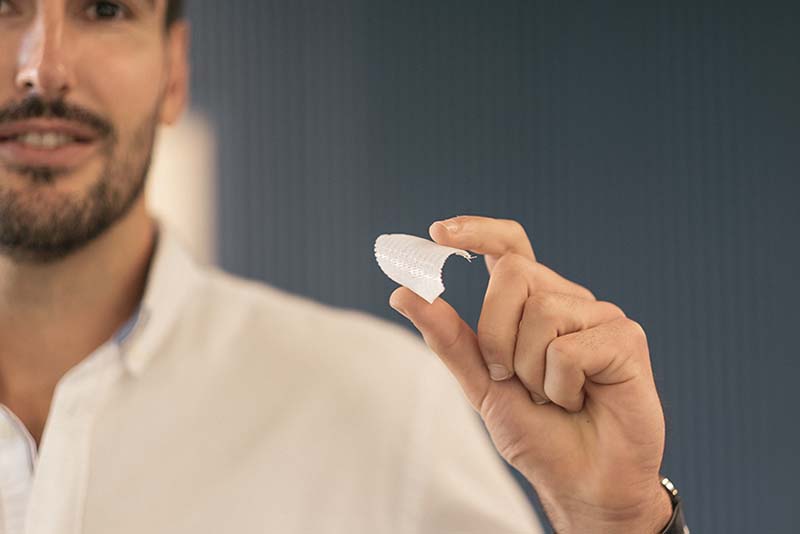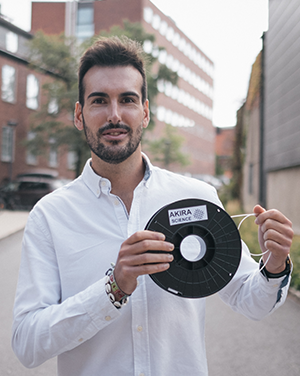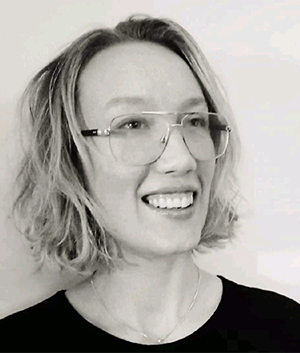They want to help the body rebuild itself

Imagine a world where your body can regenerate itself. That is the vision of Akira Science, a spinoff founded by a group of researchers at KTH and Sannio University.
In 2020, 2,3 million women worldwide were diagnosed with breast cancer. After surgery, many get silicone implants that need to be replaced after around 10-15 years. The researchers behind Akira Science have designed a new material and process that in the future could help reduce the need for silicone implants.
- Our long-term aim is to help the body heal itself, says Álvaro Morales López, PhD student at KTH and CEO of Akira Science. We still need many years of research until the our solution can be fully implemented in the healthcare sector, but we are excited about exploring this technology and finding new opportunities that could help people.
Met on the first day at KTH

Morales López came to KTH in 2017 to study a Master in Chemical Science and Engineering. Through Astrid Ahlinder, a PhD student he met on his first day, he later got in contact with Professor Anna Finne Wistrand and her research in tissue engineering.
Professor Finne Wistrand and Tiziana Fuoco at KTH, together with Daniela Pappalardo at the University of Sannio in Italy, developed the know-how that is the foundation of Akira Science. Ahlinder and Morales continued the development, and together they saw that there could be potential outside of the lab.
Helping the body create new tissue
The core of their innovation is 3D printed scaffolds for soft tissue engineering, made from a new degradable polymer. In the future, these scaffolds are meant to be implanted in the body and with the use of stem cells and a growth medium help the body create new tissue in the right shape and form.
The materials available on the market today materials are often rigid, but this solution is flexible enough to bend and shape in almost any form, an advantage because a pliable material can better mimic the human body.
- Right now, our idea is to sell our products to other researchers and companies working with 3D printing technologies, says Morales López. At the same time, we continue our research in tissue engineering, with the aim of developing solutions for the healthcare sector.

Building the foundation of a business
In the fall of 2019, Ahlinder and Morales López started to work more actively with the development and with support from KTH Innovation, they started building the foundation of a business.
Akira Science is currently one of the teams in the KTH Innovation pre-incubator program , a program for students, researchers and employees at KTH who want to take their ideas to the next level.
- The program is inspiring, says Morales López. Where I come from, it is unusual to mix different backgrounds and hierarchies, from professors and experienced researchers, to master and bachelor students. I find it fascinating and I love it!
"We all face the same challenges"
KTH Innovation welcomes around 15 new teams per semester into the pre-incubator program. The program builds on KTH Innovation’s ordinary support that is available to anyone at KTH, without an application process. The teams in the program also get to take part in workshops to develop their ideas, get office space with KTH Innovation at Teknikringen 1, and are immersed in a supportive community.
- We come from a polymer science background, but in the program, we mix with experienced business people, young entrepreneurs, scientists and others working on their own ideas. It doesn’t matter where you come from, we are all facing the same issues and challenges, says Morales López. How to make a website, how to make a logo, which steps to take to get into the market, how to get traction and so on.
Starting to believe in a future as a company
The application period to Batch 14 of the KTH Innovation pre-incubator program is open until September 29th, 2021.
- The program has been great for us. We have increased our network and gotten structure and support. We are starting to believe we can have a future as a company. I would really recommend the program to other researchers at KTH.
Tips for other researchers
In October, Akira Science will graduate from the program. In the next couple of years, the plan is to secure funding, hire new people, setup AKIRA´s facilities and perform new in vivo studies in larger animals. At the same time, Morales López will continue working on his PhD at KTH. Ahlinder is now involved in an advisory role.
- I think one common mistake us researchers do is not thinking about how our results could improve society and bring new ideas into the market. We don’t realize the value of what we have created. Hearing people from different backgrounds and fields can give new insights, ideas and new ways of looking at your research.
Text: Lisa Bäckman

